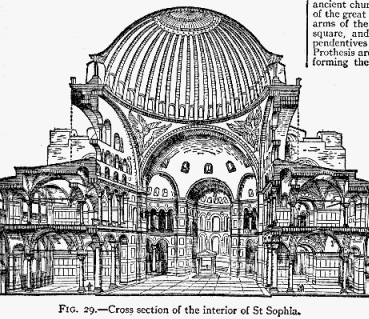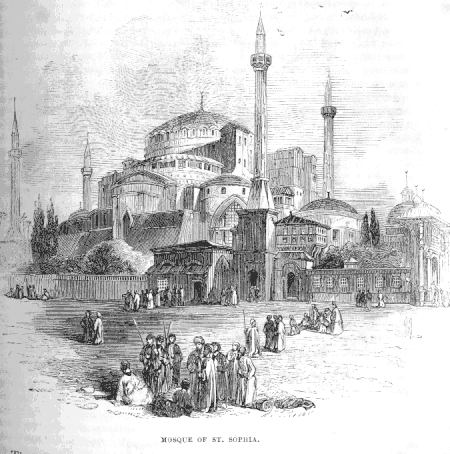A Dating Game
Today, I learn an unexpected lesson from a dating game. The University of Houston's College of Engineering presents this series about the machines that make our civilization run, and the people whose ingenuity created them.
Let's play a game with history and technology. First, I'll use my computer to generate a random date between 1 AD and 1950 AD. Just a minute. There! The computer gave me 584. So today we'll ask what was going on in the year 584 AD.
Boy! Is that ever a lousy date! The Roman empire was coming apart. Christianity was mired in politics. China had been through 400 years of civil war. It would settle down again, but in the next century. The Prophet Mohammed was just 14. His followers would build a great civilization, but not for a while.
Right now we hovered between the old world and the new.
The center of civilization was the city of Byzantium -- today's Istanbul, Turkey. Byzantium had built a great wall against the West. It gazed East across the Bosporus. Thus armored, it was becoming a static, closed world. Yet that's the best place to look for inventive energy in 584 AD.
The great architect/inventor of that age was Anthemius of Tralles. He had died half a century earlier. His finest work was the cathedral of Hagia Sofia, or Holy Wisdom. He finished it in 527, but an earthquake soon damaged it. The rebuilt cathedral -- the one standing today -- was finished in 558.
If you've ever been in Hagia Sofia, you've been hit by an overwhelming sense of interior space. The partial domes rise one upon another. They carry a huge final dome at the top. Hagia Sofia ended an architectural era. It took the Roman arch to its limits, and the result is stunning. No one outdid it until Europe began making Gothic cathedrals 500 years later.
Anthemius himself was wildly ingenious. He was a mathematician. He wrote a book on parabolic mirrors. One story tells of a quarrel between Anthemius and a neighbor named Zeno. Anthemius finally decided to teach the fellow a lesson. He created a steam-powered artificial earthquake under the man's house.
But Anthemius had been dead for half a century in 584 AD. The only Byzantine invention we remember after his death was Greek Fire. It was a sort of napalm-like goo that the Byzantines flung at their enemies.
So our random date is interesting -- not for what it was, but for what it wasn't. It was a gap in human energy. It was a hiatus in the forward march. This random date -- this date I never would've chosen -- is a grim reminder. We, too, can lose our verve -- our mental fight -- our forward motion. And if we do, nothing remains but to wait for someone else to pick up the thread of civilization.
I'm John Lienhard, at the University of Houston, where we're interested in the way inventive minds work.
(Theme music)
This was a completely legitimate experiment. I really did generate the date randomly. I really was horrified by what I got. I really did learn from the exercise.
I used a conventional encyclopedia for most of my information. The steam-powered earthquake story comes from
White, L., Medieval Technology and Social Change. New York: Oxford University Press, 1966, pp. 89-90.
You may also be interested in a detailed historical time-line that I used:
Chronicle of the World. (J. Bourne and J. Bourne, eds.) Ecam Publications, 1989.

Hagia Sofia (incorrectly called St. Sofia) Cathedral, later converted to a Mosque, as represented in the 1911 Encyclopaedia Britannica

Hagia Sofia shown as a mosque in the 1855 National Magazine